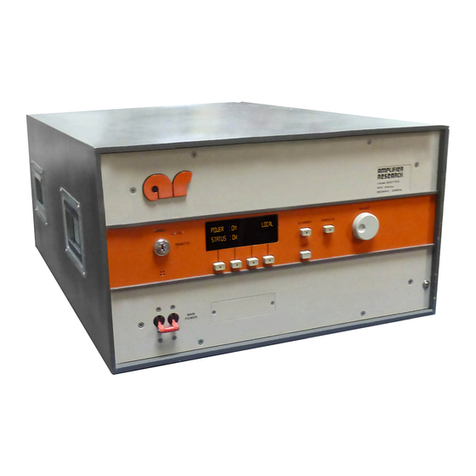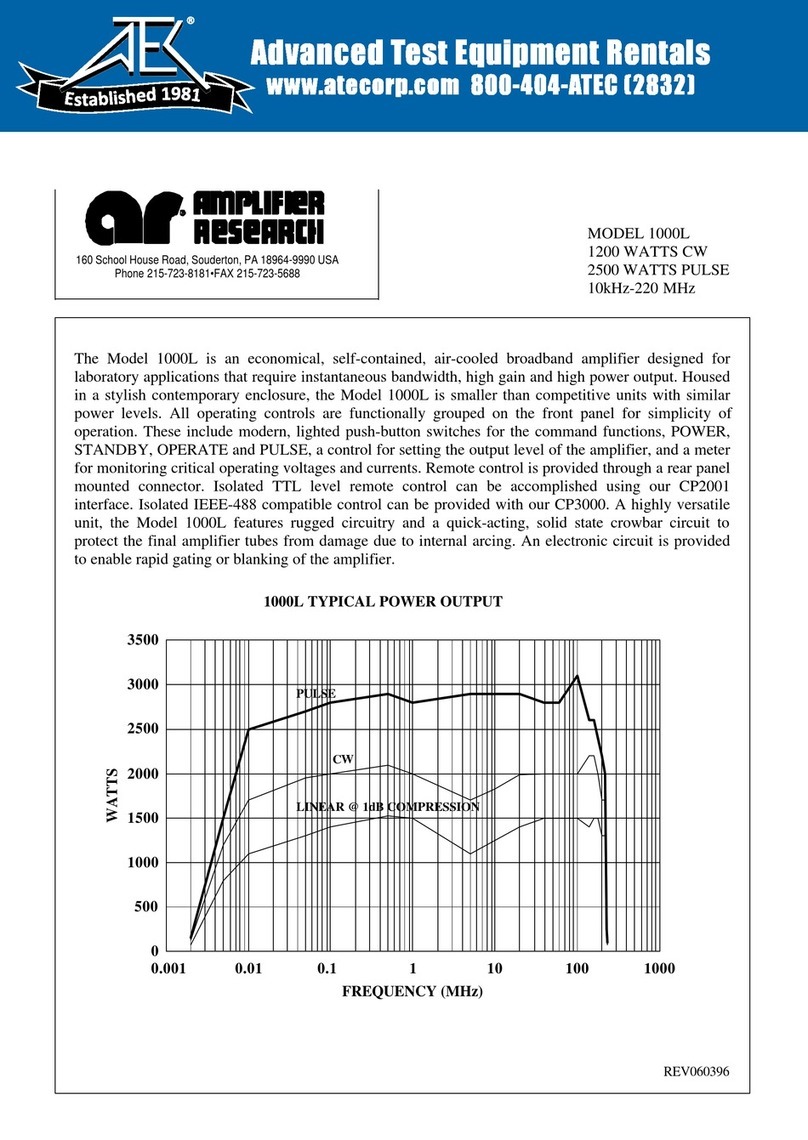Amplifier Research 10W1000 Service manual
Other Amplifier Research Amplifier manuals

Amplifier Research
Amplifier Research Amplifier Research User manual

Amplifier Research
Amplifier Research 1000L User manual

Amplifier Research
Amplifier Research 100A250 series User manual

Amplifier Research
Amplifier Research 200T4G18 Service manual

Amplifier Research
Amplifier Research 75A250A User manual

Amplifier Research
Amplifier Research 500A100A User manual



























